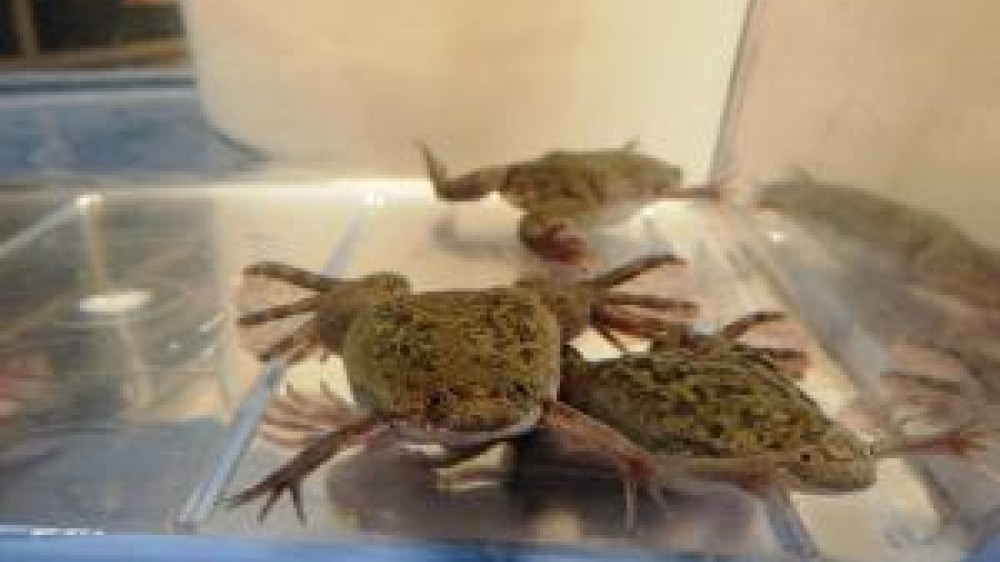Reducing the use of male Xenopus frogs

Researchers at University of Portsmouth have optimised a robust sperm preservation method that will reduce the number of frogs used in research.
The work, recently published in Theriogenology, comes from Portsmouth’s European Xenopus Resource Centre (EXRC), which is supported by an NC3Rs infrastructure grant.
The African clawed frog (Xenopus laevis) is a common model organism used widely for basic cell biology and developmental research, as well as the study of human genetic disorders. EXRC is the world’s largest Xenopus research facility which generates, breeds and distributes genetically altered frogs, frog sperm and frog embryos to more than 150 research laboratories worldwide.
Transporting live frogs can cause significant stress to the animals. To tackle this challenge, researchers at the EXRC have improved a method of preserving Xenopus sperm, which can then be transported and used for breeding instead of live males.
Importantly, the team led by Professor Matthew Guille has also shown that dividing the sperm into more aliquots (eight or more per testis instead of the commonly used four) has little difference on sperm viability or subsequent development. This means that sperm from each male can be preserved by freezing and subsequently used in eight or more experiments, offering an opportunity to significantly reduce the number of male Xenopus frogs used in research.
The researchers are now planning to identify the most effective methods for sperm distribution to other laboratories. The detailed sperm preservation protocol will be made available and continuously updated on the EXRC and other centre’s websites.
References
-
Pearl E, Morrow S, Noble A, Lerebours A, Horb M, Guille M (2017) An optimised method for cryogenic storage of Xenopus sperm to maximise the effectiveness of research using genetically altered frogs. Theriogenology 92: 149–155 doi: 10.1016/j.theriogenology.2017.01.007
